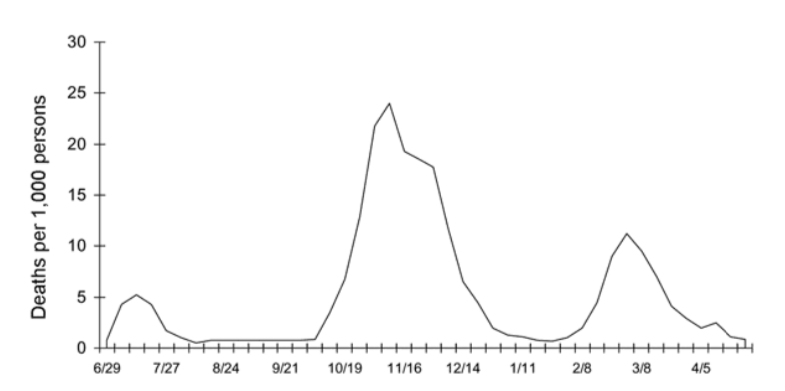If history is any guide for the future, the 1918 flu pandemic (also know as the Spanish Flu) warns us not to let our guard down after the coronavirus peaks. While social distancing is now helping states and public health departments avoid a second peak, any loss of focus or vigilance could lead to a dangerous second wave.
The Spanish Flu lasted 36 months. The first spike occurred in July 1918 resulting in a death rate of 5 per 1,000 people. A variety of conditions allowed the flu to spike very quickly a second time resulting in a death rate of 25 per 1,000.
To avoid repeating history, businesses must continue to be vigilant as economies open up and people return to work. There are 2 tools recommended by the CDC; social distancing and contact tracing. Because social distancing often requires a tremendous change in behavior among swaths of society, employers should consider other tools to help drive compliance.
One remedy could be wireless technology. The unobtrusive nature of wireless technology is ideal for helping to enforce social distancing, without a dramatic invasion into a person’s personal life or privacy.
For example, the Social Distancing and Contact Tracing solution from AiRISTA uses BLE sensors worn as a wristband or pendant. The BLE sensors beacons out their location and scans for other beacons. When the signal strength of another nearby tag exceeds what is equivalent to six feet in distance, the tag alerts each of the wearers.
To provide contact tracing, each instance of a contact must be recorded in a database. In the case of AiRISTA, the tags record a history of contacts locally on the tag and relay these records to the cloud based software system. The tags use existing wireless infrastructure to communicate to the software platform. When a tag comes near an access point, the tag uses BLE or Wi-Fi to pass its stored contacts to the cloud. Entering the name or ID of an employee into the software platform returns a history of contacts made over a specified period of time.
The software platform provides tools to help analyze progress toward distancing compliance. In the system, users can be organized by department or group. Tests of various policies and workflows can be run on different groups as a sort of A/B test to help arrive at more effective distancing policies. And the system provides reports of groups that might form throughout the day to help identify problems.
Gamification strategies can be used to encourage continuous improvement. Individuals, groups and departments can compare their progress over time and comparisons can be made to other companies in similar industries using anonymized data.
User privacy is ensured because the system does not track the physical location of tags. And tags are identified by their unique ID rather than the name of employees.
Strategies such as contact tracing will be crucial for businesses to avoid a second wave of COVID-19 that could cripple their operations. Many healthcare professionals and leaders have warned that unless adequate preventative measures are taken, a second wave could develop.
On April 21, the CDC Director Robert Redfield warned, “There’s a possibility that the assault of the virus on our nation next winter will actually be even more difficult than the one we just went through.”
This coronavirus pandemic will be one of the most significant events in our lives. Interestingly, there has been little reflection on past American pandemics. The Spanish Flu claimed 675,000 American lives compared to 50,000 from COVID-19 as of April 2020.
The NY Times columnist David Brooks believes part of the reason is the shame people felt afterwards for failing to come together. “This explains one of the puzzling features of the 1918 pandemic. When it was over, people didn’t talk about it. There were very few books or plays written about it. Roughly 675,000 Americans lost their lives to the flu, compared to 53,000 in battle in World War I and yet it left almost no conscious cultural mark.”
We have an opportunity to learn from history and avoid a more deadly second wave if we act responsibly as we get back to work.
David Brooks, “Pandemics Kill Compassion, Too: you may not like who you’re about to become”, NY Times, 3/12/20





